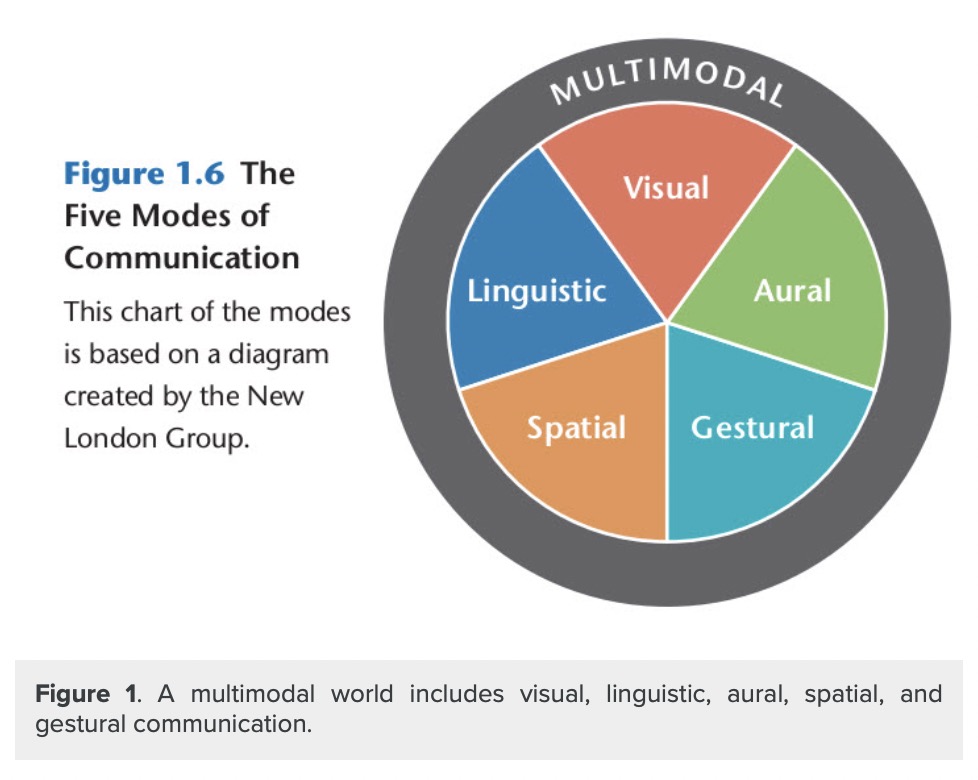In this task, I imagined a dialogue between the little prince and Dr. Rose who both live on planet Asteroid B-612. Dr. Rose has recently traveled to earth and she brought back a cellphone with her, which arose so much curiosity from the little prince and his friends. Click to view the short video.
The little prince is confused about why people spend so much screen time, instead of appreciating the real beauty of friendship and nature. Based on Dr. Rose’s observation, she sees how much information communication technologies have affected people’s working lives, public lives, and personal lives (NLG, 1996). Therefore, she certainly believes that digital literacy is one of the skillsets people have to obtain.
The Redesign Process
I did the voice cover for both characters, Dr. Rose is my real voice, and I used a voice editor for the little prince. I apologize for the sound quality as it was not been recorded in a studio but from my smartphone. The voice and images were being edited by Video Crop. I picked only one item from my bag which is the cellphone as I find it connects more closely to the topic of text technology, digital literacy, and literacy pedagogy. The story is based on a fictional scenario of the little prince because I want to grab my audiences’ attention through this beloved character.
Out of the five design elements presented by the New London Group (1996). My re-design process involves the visual design, linguistic design, and audio design. I need to write a script first, work on my ideas in terms of how to systematically and logically present my thoughts on digital literacy. Then move on to voice recording and video editing. In other words, the redesign process starts from linguistic design, then proceeds to audio and visual design. This may be the case for many movie productions that follow the same order of having a written script, then move on to filming productions that mainly involve audio and visual design. There are many variations of the re-design process, some may involve more elements, for example, designing a course program will likely involve all five elements.

(Lumen Learning, n.d.)
Potential Benefits & Challenges of Engaging with Mode-changing
In previous modules, we compared written storytelling and oral storytelling. Back then, I argued against oral storytelling because I feel written storytelling such as books, journals, essays are more compelling. However, after reading module 6&7 content, also from creating this video, now I am more inclined to believe both formats have their highs and lows.
“Human knowledge is embedded in social, cultural and material contexts (NLG, 1996)”. I argue that engaging with various modes of teaching offers a well-rounded education. More specifically, the potential benefits of engaging with various modes of teaching are (NLG, 1996):
- mode-changing allows diversity in classroom teaching and curriculum design, eg. accommodating students’ own interests and experiences
- mode-changing helps students to learn in different sociocultural settings, as well as specific knowledge domains and practices. eg. obtain both hard skills and soft skills
The process of identifying available design, designing, and redesigning enables teaching always to be new and upfront. Mabrito & Medley (2008) wisely suggested that the pedagogy design has to speak in learning’s language, not in instructors language. In other words, Millennials and Generation Z need to be taught in their metalanguage. However, the reality is not every school or instructor is ready to make that transition.
The potential challenges of engaging with mode-changing are students may easily get lost or overwhelmed with so many modes of teaching or simply too many options they have. It’s tempting to think new methods are better methods, while this is not true. Teachers have to figure out how literacy is being altered by new technologies and socio-cultural practices. Then offer more personalized education to individual students. For example, some students learn faster when there are visual teaching aids, then teachers need to consider and incorporate the visual components into teaching. To avoid students being lost in the flood of information, teachers need to pass on knowledge about how to classify information, filter useful information, and utilize them well.
References
The New London Group. (1996). A pedagogy of multiliteracies: Designing social futures. (Links to an external site.) Harvard Educational Review 66(1), 60-92.
Lumen Learning. (n.d.). The Five Modes of Communication: Module 4 Writing in College. Retrieved from here.
Mabrito, M. & Medley, R. (2008). Why professor Johnny can’t read: Understanding the net generation’s texts (Links to an external site.). Innovate: Journal of Online Education: Vol. 4:6, Article 2.